Can heat cause movement? With a few drops of food coloring, cooking oil, and a candle you can find out! In this simple yet exciting science experiment, kids can explore the concepts of density and convection as they watch convection currents in motion!
A demonstration video, printable instructions, and a supplies list are included as well as an easy to understand scientific explanation of how this experiment works.
Note: Because this experiment uses a fire component, adult supervision is required.
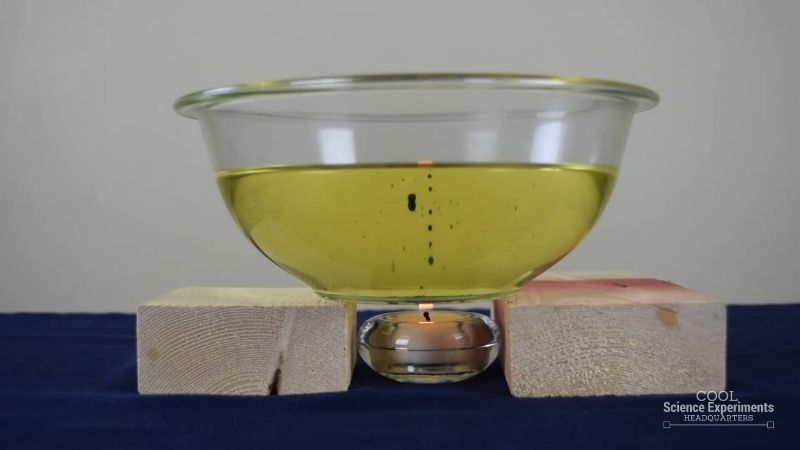
JUMP TO SECTION: Instructions | Video Tutorial | How it Works | Purchase Lab Kit
Supplies Needed
- Large heat safe glass bowl
- Cooking Oil
- Food Coloring
- Two 2×4 blocks
- Candle
- Match or Lighter
Convection Science Lab Kit – Only $5
Use our easy Convection Science Lab Kit to grab your students’ attention without the stress of planning!
It’s everything you need to make science easy for teachers and fun for students — using inexpensive materials you probably already have in your storage closet!
Convection Science Experiment Instructions
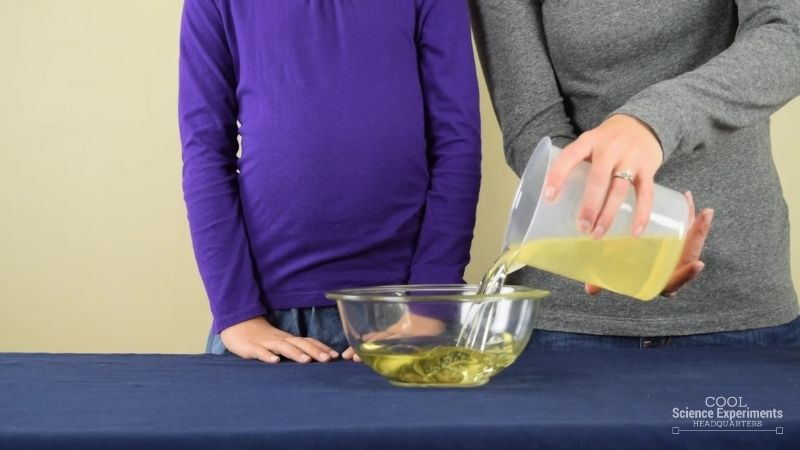
Step 1 – Begin by filling a large glass bowl with cooking oil.

Step 2 – Next, add between 5-10 drops of food coloring into the oil. Take a moment to make some observations. What happens to the food coloring? Does it mix with the oil?
Helpful Tip: Place the drops near the center of the bowl.

Step 3 – Prop the bowl up off the table using two 2×4 blocks. Position the blocks so there is a space between them to put a candle.

Step 4 – Light a candle and carefully place it under the bowl. The flame of the candle should touch the bottom of the glass bowl.

Step 5 – Look through the side of the glass bowl and watch carefully to observe what happens. Write down what happens. Helpful Tip: It will likely take 5 minutes before you see anything happen to the liquid/food coloring.
Do you know why the food coloring moves around in the oil? Find out the answer in the how does this experiment work section below.
Video Tutorial
How Heat Effects Liquids Experiment Video
How Does the Science Experiment Work
Heat can move in three ways: conduction, convection, and radiation. In this experiment, heat is transferred by means of convection. Convection is the transfer of heat by the movement of currents within a fluid.
In our experiment, the oil at the bottom of the bowl was heated by the candle. The particles of oil at the bottom of the pot began to move faster and further apart. As a result, these oil particles became less dense than the rest of the oil particles in the bowl, so these heated, less dense oil particles began to rise. (Less dense fluids rise and more dense fluids sink). The surrounding, cooler oil particles flow in to take its place. This flow creates a circular motion known as a convection current. A convection current is caused by the rising and sinking of heated and cooled fluids.
You can see evidence of the convection current if you look at the food coloring in the bowl. Notice bubbles of food coloring rise from the center of the bowl, drift to edges of the bowl, and sink back to the bottom.
Convection currents are all around us and responsible for heating many things! Our homes are heated in the winter through convection currents. The troposphere of the atmosphere (the layer closest to Earth) is heated through convection currents. The mantle inside of Earth is heated through convection currents, which causes Earth’s crust to drift in a process called continental drift.
Convection Science Lab Kit – Only $5
Use our easy Convection Science Lab Kit to grab your students’ attention without the stress of planning!
It’s everything you need to make science easy for teachers and fun for students — using inexpensive materials you probably already have in your storage closet!
I hope you enjoyed the experiment. Here are some printable instructions:
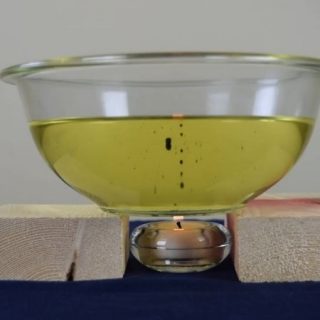
Convection Science Experiment
Materials
- Large heat safe glass bowl
- Cooking Oil
- Food Coloring
- Two 2×4 blocks
- Candle
- Match or Lighter
Instructions
- Begin by filling a large glass bowl with cooking oil.
- Next, add between 5-10 drops of food coloring into the oil. Helpful Tip: Place the drops near the center of the bowl.
- Prop the bowl up off the table using two 2×4 blocks.
- Light a candle and carefully place it under the bowl. The flame of the candle should touch the bottom of the glass bowl.
- Look through the side of the glass bowl and watch carefully to observe what happens. Helpful Tip: It will likely take 5 minutes before you see anything happen to the liquid/food coloring.
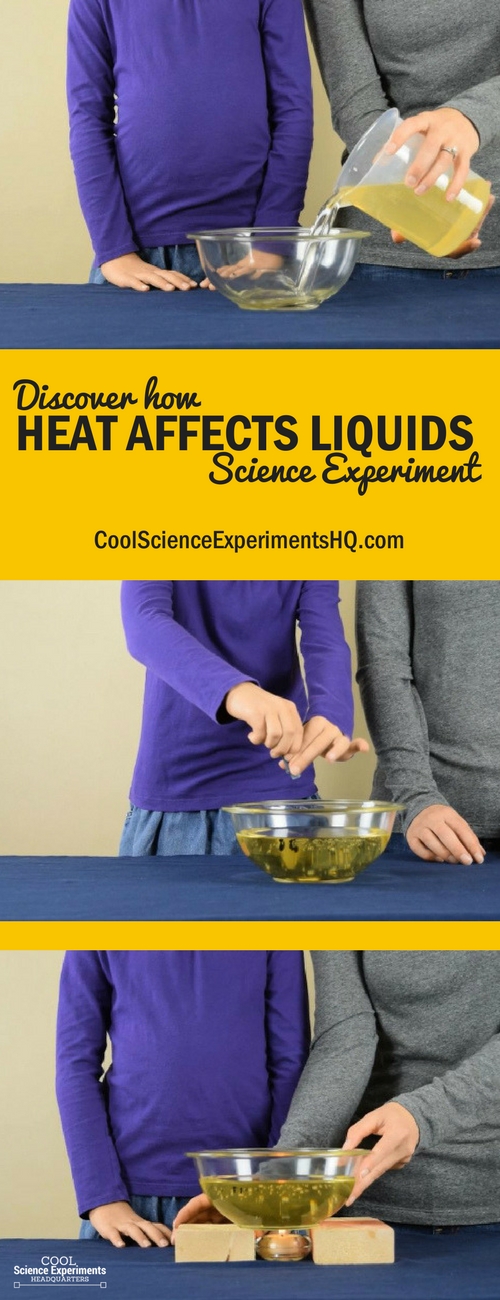
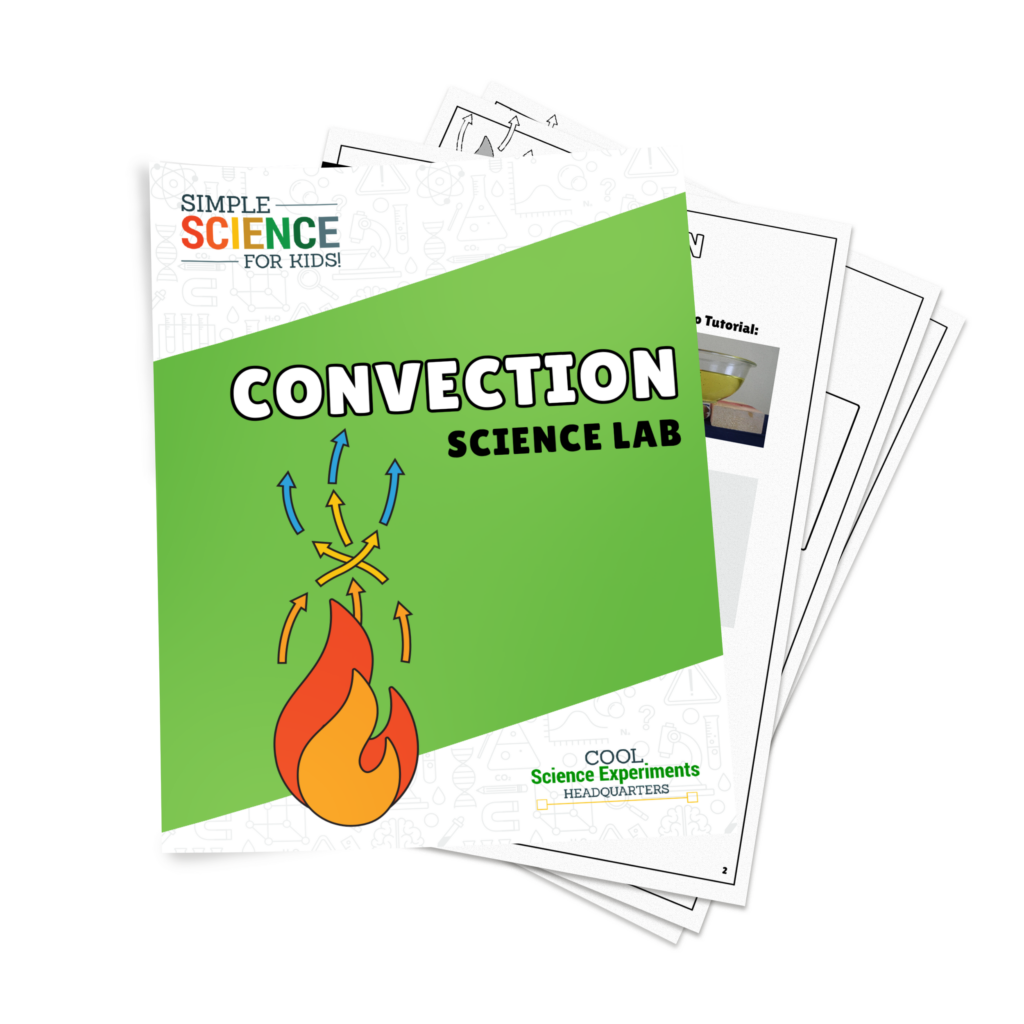

Leave a Reply